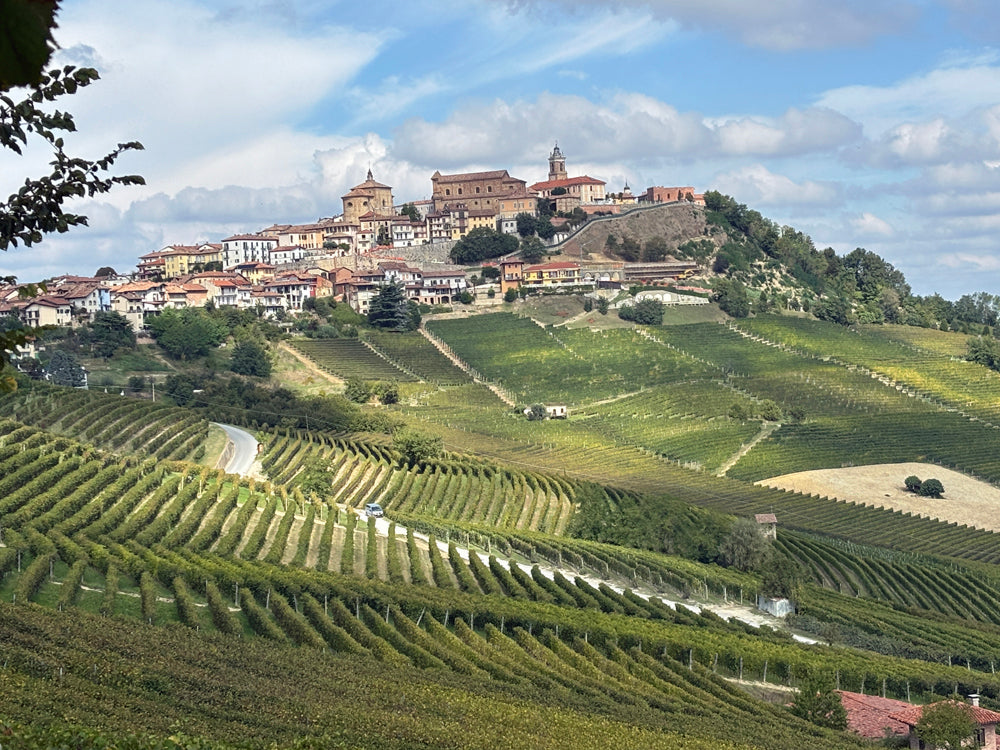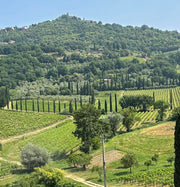How and where do I buy the best Barolo?

There's no single "best Barolo." The trick is to find the best Barolo for your taste, occasion, and budget . In this article, we'll explain what to look for, how Barolo regions (communes) and crus (MGAs) influence flavors, and how to buy smart – both online and in-store.
TLDR - Quick Buying Guide
-
Start with Barolo Classico for a complete taste of style and excellent value.
-
Choose crus (MGAs) if you are looking for targeted character (e.g. Serralunga = structure, La Morra = elegance).
-
Note the vintage : young = powerful & taut; riper = softer & more complex.
-
Check aging potential : Barolo needs time. Buy two bottles: one now, one in 3–5 years.
-
Buy from a specialist with their own import, clear origin and ready-to-storage storage.
[ Tip : on Brunolo.nl you can easily filter by region, cru and vintage.]
What makes a Barolo “the best” for you?
Nebiolo grape, terroir, and time are the three pillars. Barolo is 100% Nebbiolo and is aged for a minimum of 38 months (at least 18 of which in wood); Riserva even longer. The result is often power and finesse : rose, tar, cherry, and spice, with firm tannins in youth and silky smooth with age.
Taste profile in three questions
-
Are you looking for elegant or powerful?
-
Elegant: floral nose, red cherry, silky tannins.
-
Powerful: darker fruit, leather, firm structure.
-
-
Do you want to drink now or store?
-
Now: choose more mature vintages or more accessible sub-regions.
-
Storage: Buy classic “structural communes” and robust crus.
-
-
What is your budget?
-
Classico: often €30–€60 excellent choices.
-
Crus: €45–€150+ depending on producer, plot and year.
-
Barolo Classico vs. Barolo Cru (MGA)
Barolo Classico is a blend of plots from the appellation. Its advantage: balance and consistency – ideal for getting to know a producer's style.
Barolo Cru (Menzione Geografica Aggiuntiva, MGA) comes from a single, demarcated parcel or hill. Advantage: terroir expression – you can taste clear differences between crus.
When do you choose what?
-
First acquaintance / value seekers → Classico.
-
Terroir enthusiasts / cellar builders → Cru.
[You'll find both categories on Brunolo.nl; start with the Classico from your favorite producer and then move on to their crus.]
The 11 Barolo communes (sub-areas) at a glance
Each municipality has its own stamp. Below is a practical taste compass.
| Local authority | Global profile | For whom? |
|---|---|---|
| The Morra | Lighter, floral notes, juicy red fruit, early access | Lovers of elegance and refinement |
| Community of Barolo | Classic profile; balance between charm and structure | All-round Barolo drinkers |
| Castiglione Falletto | Precision, florals + grip; often highly layered | Gourmets who seek detail |
| Monforte d'Alba | Powerful, deep, serious tannins; long life | Wines for storing, hearty cuisine |
| Serralunga d'Alba | The most robust: mineral, earthy, muscular | Long-term cellar maturation |
| Verduno | Perfume, finesse, often a bit more playful | Fragrance seekers, elegance |
| Novello | Ripe fruit, spicy note, finish | Accessible yet characterful |
| Diano d'Alba (part) | Riper fruit, slightly rounder mouthfeel | Early drinkability |
| Grinzane Cavour (part) | Balanced style, good value for money | Explorers and value seekers |
| Roddi (part) | Freshness, tension, clear acidity | Food pairing, more modern style |
| Cherasco (very small part) | Scarcer; style varies per plot | For the curious collector |
Note: This is a general guide; production style, location (exposure), altitude, and soil type within a municipality can make a significant difference.
Crus (MGAs): Why They Matter
The Barolo region has over 170 designated MGAs (crus) . A cru tells you exactly where the Nebbiolo was grown. Factors such as soil (limestone, clay, sand), exposure (south vs. west) , and altitude determine the structure, aroma, and ripening.
Examples of well-known cru styles (greatly simplified):
-
Serralunga d'Alba : Vigna Rionda, Lazzarito → power, depth, long finish.
-
Monforte d'Alba : Bussia, Ginestra → ripe fruit + firm backbone.
-
Castiglione Falletto : Rocche di Castiglione, Bricco Boschis → precision and layering.
-
La Morra : Brunate, Rocche dell'Annunziata → perfume, silk tannin.
-
Comune di Barolo : Cannubi → classic charm, refined structure.
Want to truly understand the differences between crus? Taste two or three crus side by side from the same producer, or compare a single cru from different producers.
Vintage (vintage): young, ready to drink or cellar worthy
Barolo develops beautifully. Younger years show tense acidity and firm tannins; riper years yield more truffle, tar, dried roses, and a silky texture.
Buying strategy by goal:
-
Drink now → choose vintages that have already had some bottle ageing, or communes/crus with softer tannins (e.g. La Morra, Verduno).
-
Storage (5–15 years) → choose structural communes (Serralunga, Monforte) or powerful crus.
-
Mix & match → buy from a single producer both an accessible vintage for now and a muscular vintage for later.
On Brunolo.nl we have separate landing pages for each year, with explanations and selections.
Smart shopping: in-store vs. online
Buy from a specialist
-
Honest origin (direct from Piedmont or via trusted importers).
-
Correct storage (climatized warehouse; Barolo is sensitive to heat).
-
Transparency (sub-area, cru, vintage, producer information, tasting notes).
-
Availability (choice of Classico and Cru, multiple vintages).
Buying online – how to protect yourself
-
Check specifications : does the shop mention the municipality/cru and vintage ?
-
Find tasting notes and serving recommendations .
-
Read returns and breakage policy .
-
Be aware of price logic : extremely low prices are often not a good sign.
At Brunolo.nl , you can buy Barolo directly from our own importer , in stock and properly stored . We offer Classico and Cru wines with clear filters, plus member benefits (15% discount, free shipping, exclusive wines).
Choose your producer (and style)
The producer is at least as important as the cru or vintage. Styles range from traditional (longer aging in large oak barrels, more structure) to more modern (shorter macerations, sometimes barriques, more fruit definition).
Here's how to do it:
-
Choose 1–2 producers that appeal to you (read their philosophy).
-
Taste their Classico and one Cru side by side.
-
Then follow vintages : buy 1–2 bottles each year for your personal vertical.
Serving & storage tips
-
Decanting : Younger Barolo (≤10 years) often benefits from 1–2 hours of air.
-
Serving temperature : 16–18 °C .
-
Glassware : large Burgundy model lets the aromas speak for themselves.
-
Storage : dark, vibration-free, 12–14 °C , stable.
-
Food pairing : mushroom risotto, truffle dishes, stew, game, mature cheeses.
FAQ – Quick Answer for Searchers
What's better: Barolo Classico or Cru?
Neither is "better." Classico = balance and value; Cru = distinct terroir.
How much should I spend on a good Barolo?
Expect to pay €30–€60 for strong Classicos; €45–€150+ for sought-after crus/producers.
When is Barolo ready to drink?
Often pleasant 5–10 years after harvest, top crus can yield 15–25 years .
Can I drink Barolo young?
Yes, especially from more elegant communes or warm years— but give air (carafe) and a generous glass.
Is vintage more important than producer?
Both count, but good producers still make good wine in difficult years .
Discover our Best/Price Quality Barolo Selection or our Top Selection Barolos

